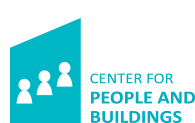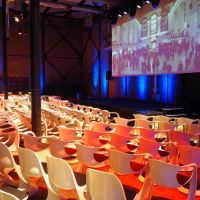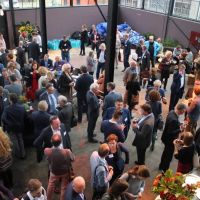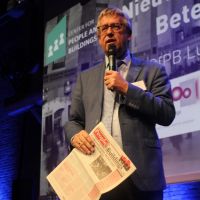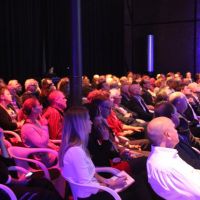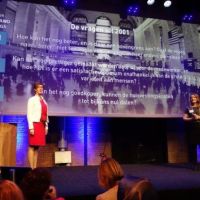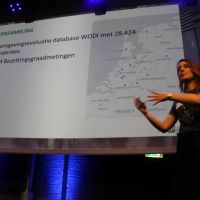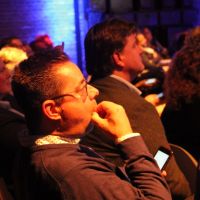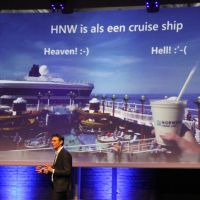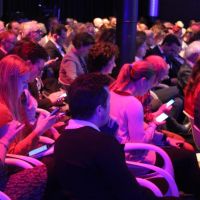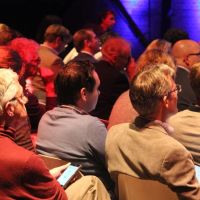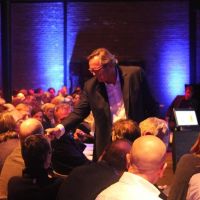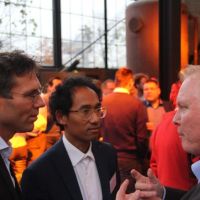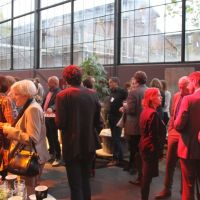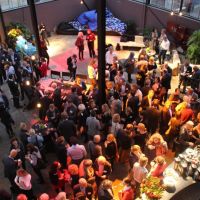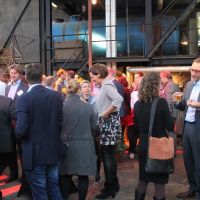Anniversary Symposium Report
4 november 2016
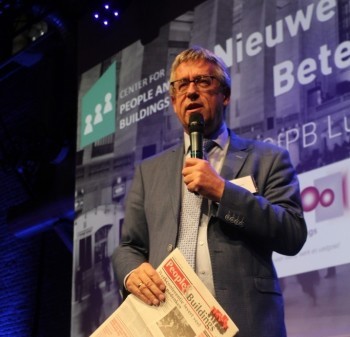
This past Tuesday, CfPB celebrated their 15th anniversary with the mini-symposium “New work environments, better performance? 15 years back, 15 years forwards.” Interest was considerable, and over 200 visitors showed up Tuesday afternoon at the beautiful old former glue factory, now Lijm & Cultuur. It was an interesting, inspiring event. We were pleasantly surprised by the many (extremely) positive comments afterwards.
Question Mark Still Not an Exclamation Point
Beforehand, we had some doubts on how the day’s message would be received. After all, the results of 15 years of research on workplace innovation show that, although there are some positive results, the title’s question mark still can’t be exchanged for an exclamation point. The definitive solution for successful new work environments remains elusive. The results are often a bit disappointing compared to the high expectations beforehand.
Lots of wishful thinking
During their presentation, Evi De Bruyne and Sandra Brunia covered some striking results of CfPB’s research, among other topics. To name a few:
- Often, there is no clear vision on workplace innovation, and the goals are ambiguous and not easily measurable;
- So far, the expectation that the office will become primarily a meeting space, with a rapid increase in working outside the office, has not been confirmed by the data. Activity patterns remain nearly identical and people spend only 4% more of their time outside the office;
- In activity-based work environments (ABW), surprisingly little workplace switching takes place. Only 4,9% changes places more than once a day and 47,6% switches less than once a week.
- The measured amount of satisfaction with aspects of the work environment varies widely between case studies, even within the same organization. Besides the design of the work environment, many other factors also play a role;
- What people consider a pleasant place to work is strongly individual;
- The occupancy rate for flexible offices is higher than that of traditional work environments, but the difference (about 10% on average) is smaller than you’d expect.
They also briefly discussed future developments and evolving management issues such as the increasing importance of flexibility.
They closed by observing that new work environments tend to be accompanied by a great deal of wishful thinking, that reality shows some clear areas of tension, and that there is still plenty left to learn about workplace innovation. Stubborn behavior within the organization, for example, “people are strange creatures” after all. This was a nice transition to the next presentation, by guest speaker Ruurd Baane.
New Ways of Working are Like Cruise Ships
HR strategist Ruurd Baane, (known for his reference work on New Ways of Working, “Het Nieuwe Werken ontrafeld; Bricks, Bytes and Behaviour”) started on a lighter note. For example, he compared New Ways of Working to cruise ships, “You either love it or you hate it.” He also mentioned the honeymoon effect: having to work to keep the relationship fun and vibrant after the good first few years. He then became more serious, providing an interesting analysis of the behavioral side of New Ways of Working. According to Baane, the bricks and bytes are usually fine. Behavior is where things go wrong. Why is this?
- Investment in behavior tends to have a long-term payoff;
- At heart, managers are driven by short-term results. They want to be more focussed on the long term, but fail to be;
- Manageability concerns dominate. HRM is based on the idea of “how to manage our people.” This is a fallacy. It puts people in a position of dependency, while actually, you want them acting autonomously;
- Crucial: How do we look at our people? Do we see talents or do we see a hassle?
- Look at the person behind the employee. You’ll gain rich insights;
- What do we want to do? Organize our resources around our people, or get them to adapt to the rules, procedures and resources?
- We want to put our people in a place of strength. That good intention gets broken down by regulations, risk management, etcetera. Self-managing teams find themselves thwarted repeatedly;
- We know where we want to end up, but we can’t seem to get there. We’re blocked by e.g. fear of abuse, or escalating costs;
- The performance paradox: we tend to look at what people can’t do, and hold them accountable for their insufficiencies, instead of profiting from their talents. Baane advocates a Strength Based Approach;
- You’d like to offer custom solutions per employee. The idea of equal measures for everyone is persistent, however;
- Organizations benefit from a flexible workforce which adapts to the market. What employees desire is job security.
Baane ended by remarking that he sees New Ways of Working as full of puzzles and brain teasers. Sometimes they hurt, sometimes they work. The concept behind New Ways of Working is sound, but the way there is more complex and challenging than we initially realized.
What does the audience think?
Led by chairman of the board Hans de Jonge, participants were asked their opinion on various subjects. This involved one of those nice new-fangled digital innovations, “polling” by smartphone. That these have rapidly become completely commonplace was clear, as no less than 80% of participants responded. A few results: In response to a query on disruptive changes to the work environment, a quarter thought new generations of employees would be the cause, 9% blamed robots, 4% increasing real estate prices, and 62% thought the changes probably wouldn’t be all that drastic. Eighty percent disagreed with the statement that top-down implementation of a new work environment is the best method.
New Lines of Investigation
Wim Pullen closed with a look ahead. He discussed ten lines of investigation that CfPB intends to concentrate on in the coming years: Trends in facilitating work│Different generations in the work environment│Vitality and health│Flexibility in buildings and work environments│Smart Business Cases│Implementation of new work environments / behavior│Organization of work and new ways of working│ Individual choices in the work environment│Optimal use of space│Design precepts of successful work environments.
